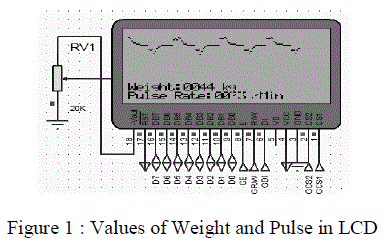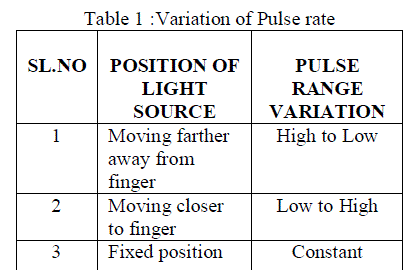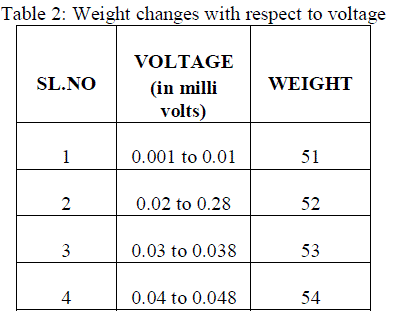Keywords
|
| Vital signals, destabilization, parameters |
INTRODUCTION
|
| Cardiac dysrhythmia (which is been also known as arrhythmia or irregular heartbeat) is any of a large and heterogeneous group of conditions in which there is abnormal electrical activity in the heart. The heartbeat may be too fast or too slow, and may be regular or irregular. A heart beat that is too fast is called tachycardia and a heart beat that is too slow is called bradycardia. Although many arrhythmias are not life-threatening, some can cause cardiac arrest. Arrhythmias can occur in the upper chambers of the heart, (atria), or in the lower chambers of the heart, (ventricles). Arrhythmias may occur at any age. Some are barely perceptible, whereas others can be more dramatic and can even lead to sudden cardiac death. Some arrhythmias are life-threatening medical emergencies and can result in cardiac arrest. Cardiac arrhythmias are one of the most common causes of death when travelling to a hospital. Others cause symptoms such as an abnormal awareness of heart beat (palpitations) and may be merely uncomfortable. These palpitations have also been known to be caused by atrial/ventricular fibrillation, wire faults, and other technical or mechanical issues in cardiac pacemakers/defibrillators. Still others may not be associated with any symptoms at all, but may predispose the patient to potentially life threatening stroke or embolism. |
| There are certain parameters which are required for the diagnosis of heart diseases on people. Electrocardiogram (ECG), pulse oximetry, weight, chest impedance, blood pressure, respiration are the basic parameters to be sensed on patients to diagnose heart disease. But the basic most required parameters Electrocardiogram, pulse detection, weight are to be measured in periodical basis regularly or even daily in order to ensure that the heart functioning is normal on persons who are lightly or severely prone to such heart attacks. |
LITERATURE SURVEY
|
| In an implementation of an integrated pulse oximeter system for telemedicine applications[1], a wireless sensor of pulse oximeter which is an integrated system is used to enable the blood oxygen saturation level in blood and it also measures the heart rate. A VLSI chip is used for the implementation process and it is attached in line with a person's ear lobe or finger or any other body part. But this type of implementation is that it monitors only Pulse rate. There is very short range of data transfer and the process of data transfer is slow. For the purpose of improving the health of Heart affected patient a system has been designed for the evaluation of the health of the heart patients at the aim of monitoring symptoms[2] and document subjective judgments on health conditions in a home environment. In this type of design the parameter of blood pressure is measured, along with that the health status of the patient is accessed via a brief questionnaire. One drawback of the system is the cost. Hence, a second design evaluation mechanism of the system is being developed, again along with only a single parameter of blood pressure.The rhythmical contractions of ventricles and atria can be characterised by the heart by passing the oxygenated blood of the body organs. The goal of the system-based architecture[3], is to provide a diagnoses process of arrhythmias, infarction, or ischemia occurrences. The system assists the patient by keeping under control his health state. Though the ECG signals are measured wirelessly only one parameter which is the electrocardiogram (ECG) measurement alone is not sufficient for diagnosis of the heart patient’s health status.In the Activity recognition monitoring framework (Hamon) [4],a framework is designed to make patients to exercise and practice their lives normally and also has a health care provider to monitor their progress and health condition remotely with physiological data. This framework can help in the measurement of the functionality of patients with Parkinson’s Disease (PD). A method for detecting paroxysmal atrial fibrillation is designed used to estimate any block of inter-heartbeat intervals in the process of paroxysmal atrial fibrillation [5].The automated method is based on processing blocks of inter-heartbeat intervals.The main aim of detecting heart beat levels is done when an atrial fibrillator is placed on a patient and it is implemented so that it can detect when it is connected with the body. The results are a challenging content regarding the aspect of hospitalization. |
DESIGN METHODOLOGY
|
A. CARE HEART AT HOME ARCHITECTURE
|
| The Care heart at home architecture aims at connecting in-hospital care of the acute syndrome with an out-ofhospital follow-up by patient/family caregiver, being directly integrated with the usual cardiology departmental HIS (Hospital Information System). Patients’ signs, symptoms, and raised alarms can be received by healthcare providers, and aggravations can be quickly detected and acted upon. |
| The basic concept of the work is that the patients are typically located at their home and the home gateway consists of a set of wireless sensors to measure the parameters from the patient. The Home Gateway is a collection of all the databases which are sensed from the patient’s body. These sensed parameters are then automatically sent via a wireless gateway like ADSL or broadband systems and sent to the hospital. A database is maintained in the hospital which records the information of the patient’s information which is called as the Hospital Information System (HIS). |
B.IMPLEMENTATION OF THE MEDICAL MODULES
|
| Inorder to construct the care at home architecture there are three medical modules to be implemented.The parameters to be implemented are as follows: |
| (i) Electrocardiogram |
| (ii)Pulse Oximeter |
| (iii)Weight Sensor |
| The electrocardiogram architecture with the hardware description is expalined as follows. |
(i) ELECTROCARDIOGRAM GENERATION:
|
| The health at home project invloves the sensing of the most vital parameters of Electrocardiogram, Pulse rate and weight.The first and foremost diagnostic requirement for a heart patient is the Electrocardiogram. Basically, an electrocardiogram uses an AD624AD Instrumentation Amplifier from analog Devices. |
| The architecture of pulse oximeter with the hardware description is expalined as follows. |
(ii)PULSE OXIMETER SENSING PROCESS:
|
| Saturation of peripheral oxygen is an estimation of the oxygen saturation level usually measured with a pulse oximeter device. In medicine, oxygen saturation (SPO2), commonly referred to as "sats", measures the percentage of haemoglobin binding sites in the bloodstream occupied by oxygen. At low partial pressures of oxygen,most haemoglobin is deoxygenated. A pulse oximeter relies on the light absorption characteristics of saturated haemoglobin to give an indication of oxygen saturation. |
| Between the change in pulses, the blood flows out and our finger becomes more transparent. The LDR detects these small minute changes in density of the blood. Finger is illuminated by red light being emitted by red led. When heart expands, there will be more blood in blood vessels and as a consequence more absorption of red light will occur and lesser amount of red light will fall on LDR. Decrease in resistance of LDR will be less and also very large current will flow through LDR. When heart contracts, then there will be no blood in blood vessels as a consequence no absorption of red light will occur and full amount of red light will fall on LDR. Decrease in resistance of LDR will be larger and only small current will flow through the LDR.The weight sensing parameter with the hardware description is expalined as follows. |
(iii) WEIGHT SENSING PROCESS:
|
| To measure the patient weight for hospital information, we have to design the weight module. The heart of any weighing system is the load cell. While the load cells are highly accurate transducers which provide the user with information not generally obtainable by other technology due to commercial factors. Load cells are designed to sense force or weight under a wide range of adverse conditions; they are not only the most essential part of an electronic weighing system, but also the most vulnerable. Amplified output voltage given to ADC channel of ARM controller. All the collected data send to receiver using UART protocol. |
(iv) ARM MICROCONTROLLER
|
| The microcontroller is used to implement the three modules of Electro Cardio Graph, pulse rate and weight. They are based on a 32 bit ARM7TDMI CPU with real-time emulation and embedded trace support, that combines the microcontroller with 512 KB of embedded high speed Flash memory. A 128- bit wide memory interface and unique accelerator architecture enable 32-bit code execution at maximum clock rate. For critical code size applications, the alternative 16-bit Thumb Mode reduces code by more than 30% with minimal performance penalty. Due to their tiny size and low power consumption, these microcontrollers are ideal for applications where miniaturization is a key requirement, such as access control and point-of-sale. |
| With a wide range of serial communications interfaces and on-chip SRAM options of 8/16/32 KB, they are very well suited for communication gateways and protocol converters, soft modems, voice recognition and low end imaging, providing both large buffer size and high processing power. Various 32-bit timers, single or dual10-bit 8 channel ADC(s), 10-bit DAC, PWM channels and 47 GPIO lines with up to nine edge or level sensitive external interrupt pins make these microcontrollers particularly suitable for industrial control and medical systems. |
RESULT AND DISCUSSION
|
(i) ECG DETERMINATION
|
| The digital oscilloscope is connected with the electrocardiograph circuit .The input values are taken as the change in heart beat from arms and leg(practically) and in voltage (experimentally). |
| The input values of ECG are taken in three patches: |
| 1. Right Arm and Left Arm |
| 2. Right Leg |
| 3. Left Leg amp (neutral patch) |
| The neutral patch forms an output graph with a frequency of 1hertz,amplitude of -530m and neutral phase .The right and left arm patches forms an output signal with an amplitude of 10m and frequency of 5hertz. The right leg patch forms an output signal with an amplitude of 50m and frequency of 1hertz |
(ii) PULSE RATE AND WEIGHT DETERMINATION
|
| The weight and pulse rate of the patient are obtained as output in the Graphical LCD (GLCD) display. The practical weight is measured in kilograms. In experimental evaluation of weight module a positive voltage of is applied to obtain output in kilograms. Pulse rate is obtained due to the change in the blood volume and light illumination. Pulse rate is measured as count per minute. The graphical LCD display also shows the ECG graph since it is connected from oscilloscope. |
 |
| The output of weight, pulse can be displayed in the graphical LCD display which may be obtained as shown in figure1 |
PERFORMANCE ANALYSIS
|
(a) Pulse rate analysis
|
| The pulse rate of a person must be obtained in a constant rate. Since Pulse rate involves a single constant value of heart beat, there must not be any variations. |
| The variation of the pulse rate may occur due to the position changes in the illumination source of the pulse generator |
 |
| The variation of pulse values according to the changes in the illumination of the light focused on the finger are analyzed and listed in table 1. |
(b) Weight measurement analysis
|
| The measurement of weight is the full load of the patient. The input to the load circuit is given in terms of voltage values. |
 |
| The various levels of voltages along with the changes in the weight are analyzed and listed in table 2 |
CONCLUSION
|
| This research work represents the requirements and the realization in terms of sensing devices and sensor data signal processing of a complete and integrated system to improve the provisioning of healthcare services for heart patients. The Care at Home system proposes an innovative home care model of the patient treatment, connecting hospital and caring heart patients without hospitalization. With the remote monitoring, it provides a beneficiary that the medical staff can realize any changes in the parameters of patients without frequently visiting them in hospitals and consequently they can take concerned action to prevent possible aggravations. The benefits extend beyond the early detection of clinical exacerbation to optimizing specialized resources scheduling and to reduce unnecessary travels to hospital. |
FUTURE ENHANCEMENT OF THE PROJECT
|
| This research work deals with the daily health check up of heart patients from the patient’s home and send the diagnosed details to the hospital server, thereby reducing the hospitalization of the patients. This research work, in future, can be enhanced upon by improving the treatment for the patients by the doctor wirelessly whenever the patient is nearer to risk status, by giving prescriptions as a first-aid. The patient’s sensed signals are sent to the hospital and in turn the patient may receive any prescriptions from the concerned cardiologist, if in case of nearer stage of risk. This project provides the heart patients to care at home along with the guidance of the cardiologist. |
| |
References
|
- An Integrated Pulse Oximeter System for Telemedicine Applications ,Paul Benjamin Crilly,1991, Electrical Engineering, University of Tennessee Knoxville.
- Design Evaluation of a Home-based Telecare System for heart failure patients, A. Gund, I. Hekman, K.Lindecrantz, B.A. Sjoqvist, E. L. Staaf and N. Thorneskold, august, 2008, 30th annual international IEEE EMBS Conference Vancouver, British Columbia, Canada.
- A Smart ECG Measurement System based on Web-service-oriented Architecture for Telemedicine Applications, October 2010,Claudio de Capua, IEEE, AntonellaMeduri, Rosario Morello, Member, IEEE, IEEE transactions on instrumentation and measurement.
- HAMON: An Activity Recognition Framework for Health Monitoring Support at Home, Abdul Motaleb El Saddik, AtifAlamri, Jamal Saboune , Mohammed F. Alhamid, November 2008, IEEE Transactions on Instrumentation and Measurement
- Automated Aetection of Paroxysmal Atrial Fibrillation from Inter-Heartbeat Intervals, De Chazal.P, Heneghan.C., Shouldice R.B.,2007, Engineering in Medicine and Biology Society,29th annual international conference of the IEEE Inaugral
- HUMAN++: Key Challenges and Trade-offs in Embedded System Design for Personal Health Care ,De Groot, H.Hoist ,August 31, 2011
- Prevailing Over Wires in HealthCare Environments: Benefits and Challenges, akira, hiroshitakahashi, inoue, keita ,kobayashi, April 2006,IEEE Communications Magazine, IEEE ,Volume: 44 , Issue: 4
- E. Rubin and R. Yates, Microsoft .NET Compact Framework.Indianapolis, IN: Sams, 2003.
- M. Schmidt, Microsoft Visual C# .NET 2003. Indianapolis, IN: Sams,2004.
- M. Gudgin, M. Hadley, N. Mendelsohn, J.-J. Moreau, and H. F. Nielsen.(2003, Jun. 24). SOAP version 1.2 part 1: Messaging framework.
|